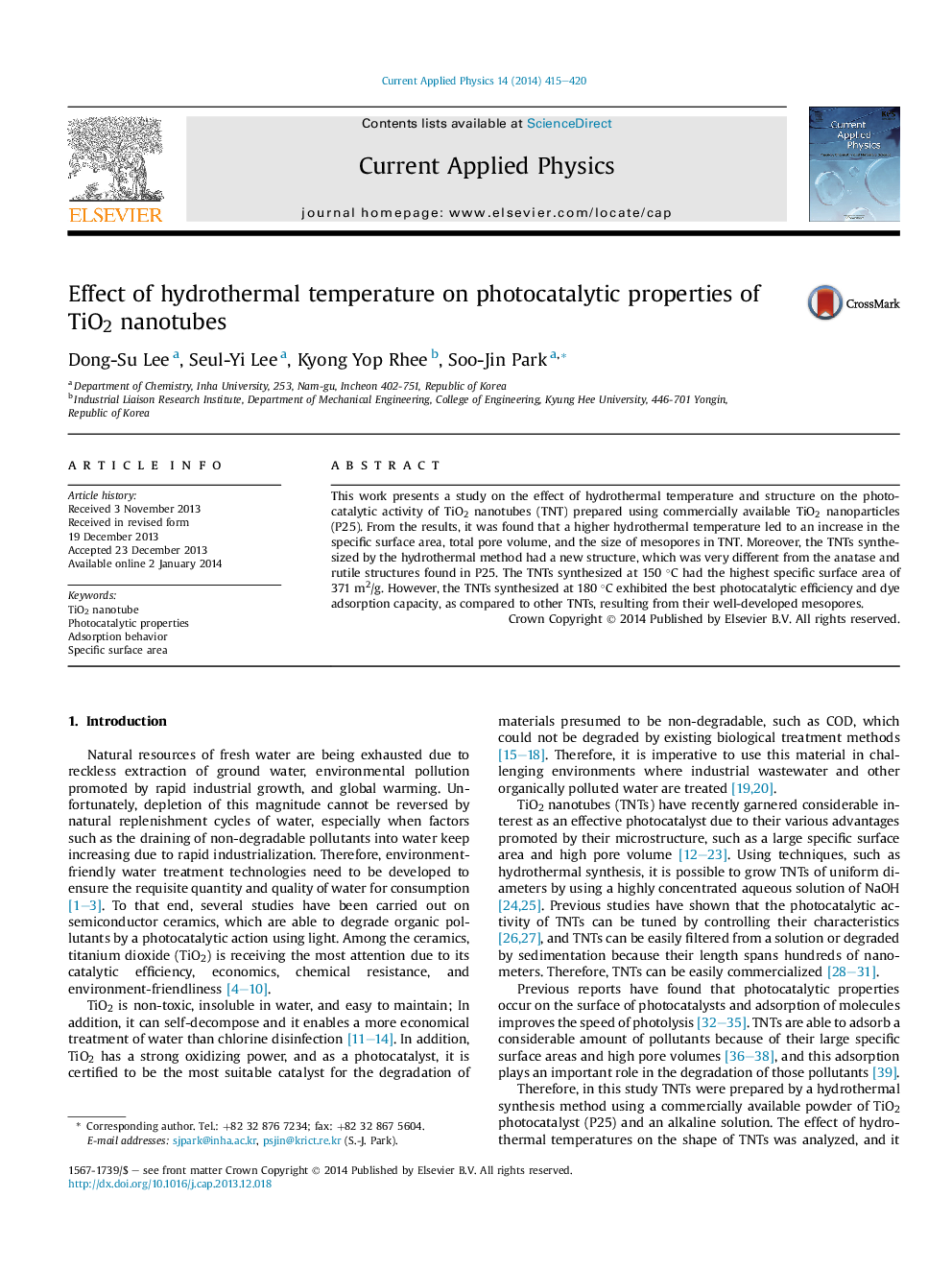| Article ID | Journal | Published Year | Pages | File Type |
|---|---|---|---|---|
| 1786252 | Current Applied Physics | 2014 | 6 Pages |
•TNT was synthesized by the hydrothermal synthesis method using P25.•The highest SBET and abundant mesopores increase the initial adsorption of dye.•TNT-180 shows the well-developed mesopores.•TNT-180 shows the best photocatalytic efficiency and dye adsorption.
This work presents a study on the effect of hydrothermal temperature and structure on the photocatalytic activity of TiO2 nanotubes (TNT) prepared using commercially available TiO2 nanoparticles (P25). From the results, it was found that a higher hydrothermal temperature led to an increase in the specific surface area, total pore volume, and the size of mesopores in TNT. Moreover, the TNTs synthesized by the hydrothermal method had a new structure, which was very different from the anatase and rutile structures found in P25. The TNTs synthesized at 150 °C had the highest specific surface area of 371 m2/g. However, the TNTs synthesized at 180 °C exhibited the best photocatalytic efficiency and dye adsorption capacity, as compared to other TNTs, resulting from their well-developed mesopores.
